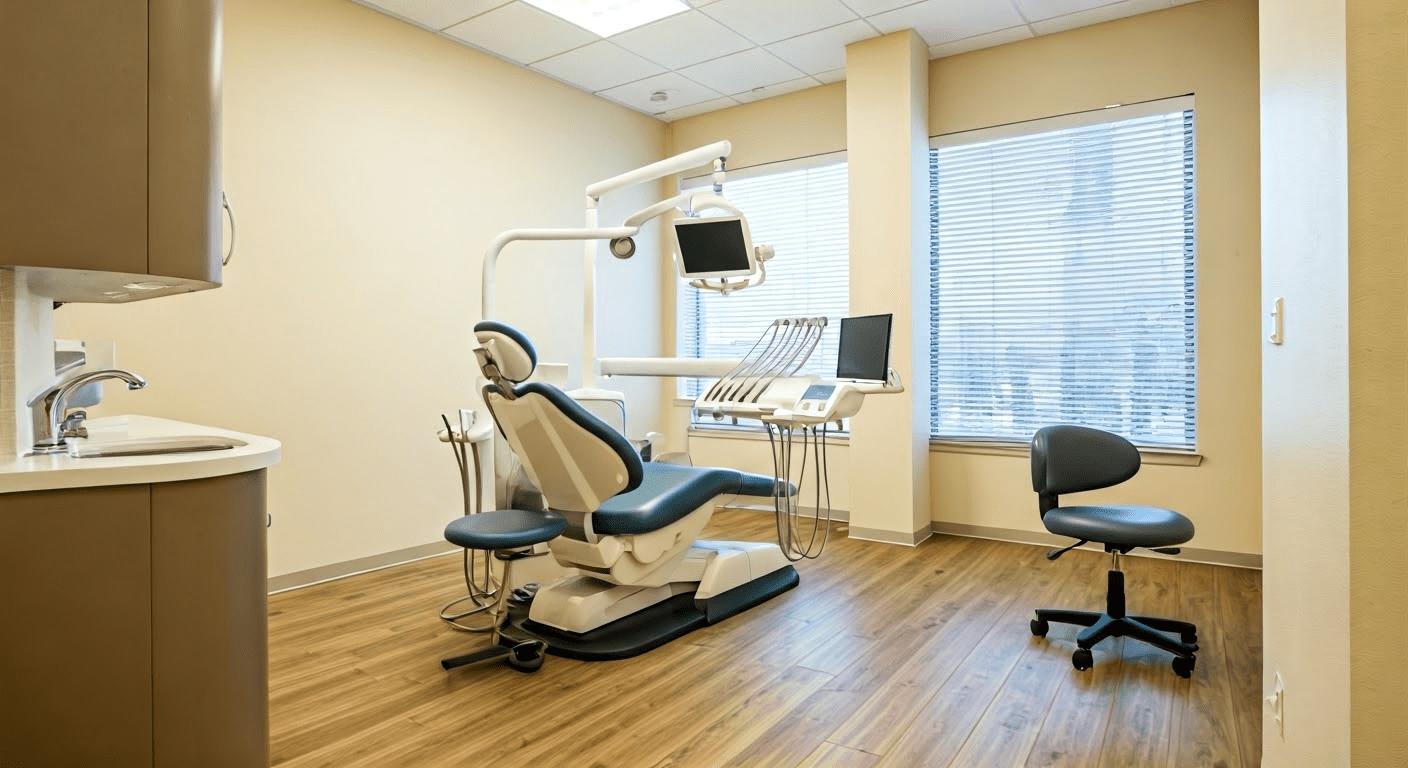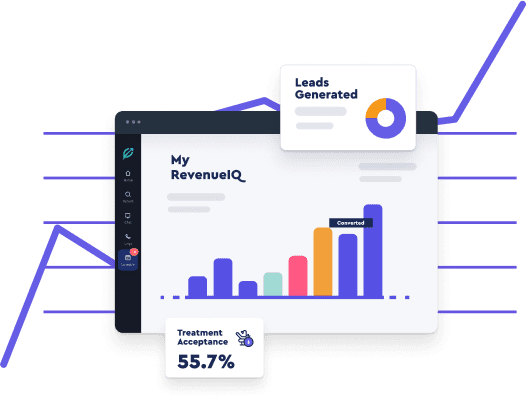Introduction to Patient Relationship Management (PRM)
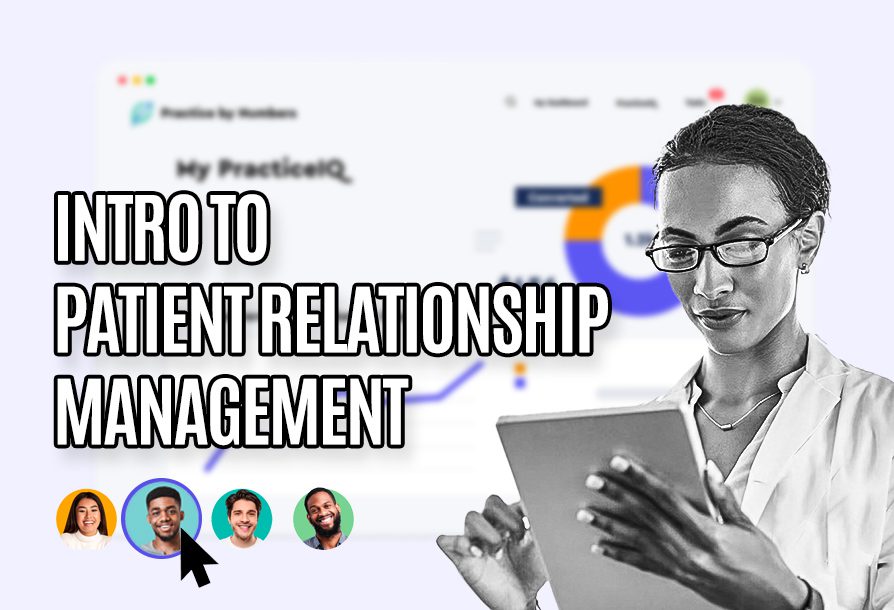
What is PRM
Patient Relationship Management (PRM) refers to the strategies, systems, and technologies healthcare providers use to manage and nurture relationships with their patients throughout the care continuum. It involves understanding patient needs, preferences, and behaviors to deliver personalized care and enhance patient experience.

Importance of PRM in Healthcare
PRM plays a crucial role in modern healthcare by focusing on building strong, lasting relationships between healthcare providers and patients. Some key reasons why PRM is important include:
- Enhanced Patient Engagement
- Improved Patient Satisfaction
- Reduced Patient Attrition
- Efficiency in Healthcare Delivery
In this article, we will cover topics like the benefits of PRM, Key features you should consider while selecting a PRM system, the different use-cases that a PRM solves in healthcare, and strategies to implement PRM. We will also provide you with real-world case studies of practices that have implemented PRM and take a sneak peek into trends in the world of PRM. So let’s begin!
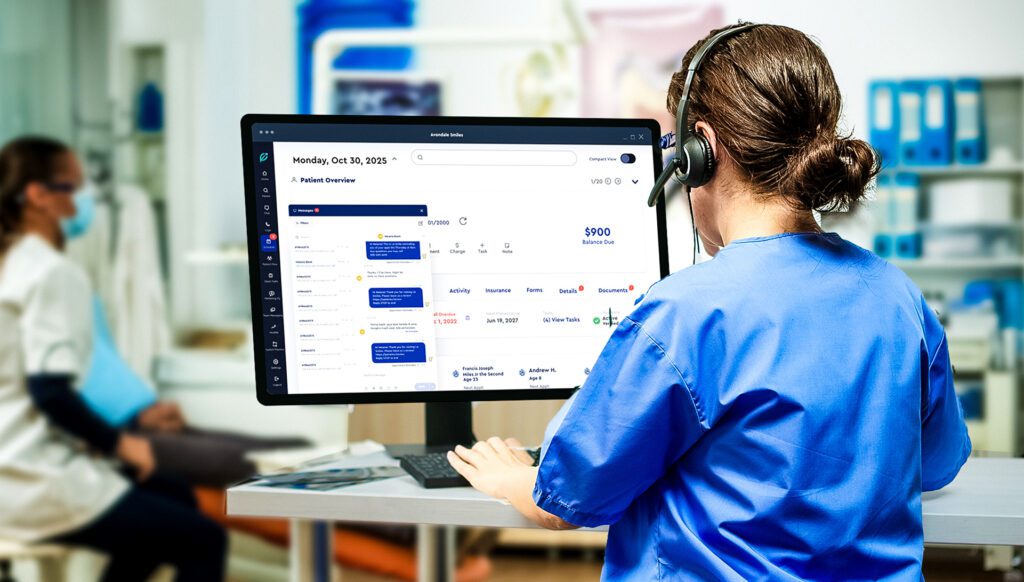
Key Features of a PRM System
A robust PRM system serves as the backbone of efficient patient management in healthcare settings, facilitating comprehensive care coordination, enhancing patient engagement, and supporting healthcare providers in delivering personalized and effective patient care.
Patient Data Management
Central to any PRM system is its capability to efficiently manage patient data, ensuring accessibility, security, and accuracy. These systems incorporate robust data management functionalities that enable healthcare providers to securely store and access patient information, including medical history, treatment plans, demographics, and contact details. By centralizing patient data in a unified platform, PRM systems facilitate informed decision-making, continuity of care, and personalized treatment approaches tailored to each patient’s unique needs.
Moreover, advanced PRM systems feature interoperability capabilities, allowing seamless integration with Electronic Health Records (EHRs) and other healthcare IT systems. This interoperability enhances data exchange between healthcare providers, improves care coordination, and reduces duplication of efforts, ultimately enhancing efficiency and patient safety.

Appointment Scheduling and Reminders
Efficient appointment scheduling and reminders are critical components of a PRM system that optimize patient scheduling processes and reduce no-show rates. These systems enable patients to conveniently schedule appointments online, view available time slots, and receive automated reminders via text, email, or phone calls. By minimizing appointment delays and improving schedule adherence, PRM systems enhance patient satisfaction and operational efficiency within healthcare practices.
Furthermore, automated appointment reminders reduce the administrative burden on healthcare staff, allowing them to focus on delivering quality patient care rather than managing scheduling logistics. Real-time scheduling updates and calendar synchronization features ensure accurate scheduling and minimize scheduling conflicts, further optimizing resource utilization and improving patient flow within the healthcare facility.
Patient Communication Tools (Secure Messaging, Telehealth)
PRM systems incorporate advanced communication tools, such as secure messaging and telehealth capabilities, to facilitate seamless communication between patients and healthcare providers. Secure messaging platforms enable confidential communication of medical information, test results, and treatment plans, enhancing patient-provider interactions while maintaining compliance with healthcare privacy regulations.
Telehealth functionalities within PRM systems support virtual consultations, remote monitoring, and telemedicine visits, expanding access to care for patients regardless of geographic location or mobility constraints. These virtual care options improve patient convenience, reduce travel time and costs, and enable timely access to healthcare services, particularly for patients with chronic conditions or complex medical needs.
Feedback and Survey Management
Effective patient feedback and survey management are integral to continuous quality improvement initiatives within healthcare organizations. PRM systems incorporate tools for collecting patient feedback, administering satisfaction surveys, and analyzing responses to identify areas for improvement. By soliciting patient input on care experiences, treatment outcomes, and service delivery, healthcare providers can gauge patient satisfaction levels, address concerns promptly, and implement targeted improvements to enhance overall patient experience.
Additionally, PRM systems enable healthcare organizations to monitor patient-reported outcomes, track healthcare trends, and benchmark performance against industry standards. Data-driven insights derived from patient feedback and surveys empower healthcare providers to make informed decisions, drive operational efficiencies, and optimize care delivery strategies to meet patient expectations and improve healthcare outcomes.
Integration with Electronic Health Records (EHRs)
Integration with Electronic Health Records (EHRs) is a fundamental feature of PRM systems that enhances clinical decision-making, care coordination, and patient safety. These systems facilitate seamless access to comprehensive patient records, including medical history, lab results, medications, and treatment plans, across healthcare settings. By consolidating patient information in a unified EHR platform, PRM systems enable healthcare providers to gain a holistic view of patient health status, streamline clinical workflows, and improve care continuity.
Moreover, interoperability between PRM systems and EHRs promotes data exchange between healthcare providers, specialists, and allied healthcare professionals involved in patient care. This interoperability supports collaborative care efforts, reduces documentation errors, and enhances care coordination across multidisciplinary teams. By leveraging integrated EHR data, healthcare organizations can achieve clinical interoperability, optimize resource utilization, and deliver patient-centered care that aligns with evidence-based practices and regulatory standards.
Patient Education Resources
PRM systems include robust patient education resources designed to empower patients with knowledge and promote active participation in their healthcare journey. These systems offer access to educational materials, health resources, and interactive tools that inform patients about their medical conditions, treatment options, and preventive care measures. By providing evidence-based information in accessible formats, such as videos, articles, and infographics, PRM systems enhance health literacy, encourage informed decision-making, and promote adherence to treatment plans.
Furthermore, personalized patient education content tailored to individual health needs and preferences fosters patient engagement and compliance with medical recommendations. Healthcare providers can use PRM systems to deliver targeted educational interventions, track patient engagement with educational resources, and assess comprehension levels to ensure effective patient education strategies. By empowering patients with knowledge and resources, PRM systems contribute to improved health outcomes, reduced healthcare disparities, and enhanced patient satisfaction within healthcare settings.
Analytics and Reporting Capabilities
Analytics and reporting capabilities are essential features of PRM systems that enable healthcare organizations to derive actionable insights from patient data, performance metrics, and operational trends. These systems utilize advanced analytics tools to analyze clinical outcomes, patient satisfaction scores, utilization patterns, and financial performance indicators. By generating comprehensive reports and visualizations, PRM systems empower healthcare providers to monitor key performance metrics, identify areas for improvement, and optimize care delivery strategies to enhance patient outcomes and operational efficiency.
Moreover, predictive analytics within PRM systems enable proactive risk management, early intervention strategies, and personalized patient care plans based on predictive modeling and trend analysis. By leveraging predictive insights, healthcare organizations can anticipate patient needs, mitigate health risks, and optimize resource allocation to improve clinical outcomes and patient satisfaction. Additionally, real-time dashboards and performance metrics allow healthcare providers to track progress towards organizational goals, measure the effectiveness of patient engagement initiatives, and demonstrate value-based care outcomes to stakeholders.
Payment Integration for Streamlined Transactions
PRM systems include integrated payment solutions that streamline financial transactions, billing processes, and revenue cycle management within healthcare practices. These systems offer secure payment processing capabilities, allowing patients to conveniently settle bills, copayments, and outstanding balances online or through mobile devices. By integrating payment gateways with patient management systems, PRM systems facilitate seamless financial transactions, reduce administrative overhead, and accelerate revenue collection cycles.
Furthermore, automated billing functionalities within PRM systems generate electronic invoices, statements, and payment reminders, improving billing accuracy and reducing billing errors. Healthcare providers can track payment status, monitor revenue streams, and reconcile financial transactions in real-time, enhancing financial transparency and operational efficiency. Additionally, PRM systems support compliance with regulatory requirements, data security standards, and healthcare billing regulations, ensuring patient financial information remains protected and confidential throughout the payment process.
Benefits of Patient Relationship Management
Patient Relationship Management (PRM) is pivotal in enhancing healthcare delivery by prioritizing patient satisfaction, improving outcomes, and optimizing operational efficiency. Here are the key benefits of PRM in healthcare:
Enhanced Patient Experience
Delivering an exceptional patient experience goes beyond clinical outcomes—it encompasses every touchpoint in the patient journey. A PRM empowers healthcare providers to:
- Personalize patient interactions and anticipate needs
- Deliver tailored care plans
- Proactively address patient concerns
- Enhance communication channels
- Cultivate trust, leading to higher patient satisfaction and loyalty
PRMs also facilitate seamless access to medical information, appointment scheduling, and remote care options, enhancing convenience and reducing patient stress.
Higher Patient Retention and Satisfaction
PRMs play a crucial role in achieving higher patient retention and satisfaction by:
- Emphasizing personalized care and effective communication
- Building strong, trusting relationships with patients
- Understanding individual patient needs and preferences
- Delivering tailored services that enhance satisfaction and foster loyalty
Proactive patient engagement, regular follow-ups, educational resources, and responsive communication channels reinforce the patient-provider relationship. Satisfied patients are more likely to remain loyal, resulting in reduced turnover and a more stable patient base.
Improved Health Outcomes
PRMs significantly enhance health outcomes by fostering active patient engagement and personalized care through:
- Robust patient education
- Timely interventions
- Continuous monitoring
PRM systems empower healthcare providers to optimize treatment plans and preventive strategies, ensuring clear communication and alignment of treatment goals between patients and providers. This proactive approach encourages patients to participate in decision-making, promoting treatment adherence and compliance. By tracking patient progress and making timely adjustments to treatment plans, PRM supports ongoing care continuity, particularly in managing chronic diseases and facilitating faster recovery rates.
Increased Operational Efficiency
PRM systems streamline administrative tasks and optimize resource utilization, leading to significant improvements in operational efficiency. Key benefits include:
- Centralized patient data and communication channels
- Reduced errors and paperwork
- Enhanced workflow coordination across departments
Real-time analytics and reporting capabilities enable data-driven decision-making, allowing practices to identify bottlenecks, allocate resources effectively, and improve overall service delivery. This allows healthcare teams to focus more on patient care and less on administrative burdens, driving efficiency gains and cost savings
Cost Savings in Healthcare
Efficient management of patient relationships through a PRM leads to substantial cost savings for healthcare organizations. By reducing patient turnover and enhancing retention rates, providers can minimize administrative costs associated with acquiring new patients. PRM strategies that prioritize preventive care and proactive management of chronic conditions help mitigate the need for costly hospitalizations or emergency interventions.
PRM systems streamline operational processes such as appointment scheduling, billing, and patient communications, optimizing resource allocation and reducing overhead expenses. Automation of routine tasks improves workflow efficiency, allowing healthcare providers to reallocate staff resources to more critical patient care activities, thereby enhancing productivity and reducing labor costs.
Improved Financial Performance
PRM contributes to enhanced financial performance by optimizing revenue cycle management, reducing patient no-shows, and minimizing costly readmissions. Key benefits include:
- Improving billing accuracy
- Streamlining payment processes
- Maximizing reimbursement rates
PRM systems also support value-based care initiatives by demonstrating measurable improvements in patient outcomes, enhancing care quality metrics, and fostering long-term patient relationships that drive revenue growth through referrals and positive online reviews.
Competitive Advantage in the Healthcare Market
In a competitive healthcare landscape, practices that prioritize patient-centric care and operational excellence gain a significant competitive edge. PRM enables healthcare providers to:
- Differentiate their services by offering personalized care experiences
- Implement superior patient engagement strategies
- Achieve efficient care coordination
Advanced PRM functionalities, such as patient data analytics, population health management, and predictive modeling, help organizations anticipate market trends, adapt to regulatory changes, and capitalize on emerging opportunities. This strategic approach enhances patient satisfaction, strengthens brand reputation, and improves market position, attracting new patients and retaining existing ones.
Reputation Management and Patient Referrals
PRM systems play a crucial role in managing and enhancing a healthcare provider’s reputation by fostering positive patient experiences and encouraging patient referrals. Benefits include:
- Automated feedback collection
- Online review management
- Proactive patient communication
Healthcare organizations can build trust, address patient concerns promptly, and cultivate a loyal patient base. Positive patient testimonials and high satisfaction scores enhance online visibility, improve search engine rankings, and attract prospective patients seeking reliable healthcare providers. By prioritizing reputation management and patient referrals, organizations can sustain growth, foster community trust, and achieve sustainable competitive advantage in the healthcare marketplace.
Implementing PRM in Healthcare Practices
Implementing Patient Relationship Management (PRM) systems in healthcare practices requires careful planning, execution, and strategic alignment to maximize their effectiveness and integration into existing workflows. This section explores essential strategies for successful PRM implementation, addresses challenges commonly faced during adoption, outlines methods for seamless integration with healthcare workflows, and emphasizes the critical role of training and support for healthcare staff. PRM systems play a crucial role in modernizing healthcare practices by enhancing patient care coordination, facilitating better provider-patient communication, and optimizing clinical workflows, thereby improving overall operational efficiency and patient outcomes.
Strategy for Effective PRM Implementation
Implementing Patient Relationship Management (PRM) systems effectively requires a structured and strategic approach to ensure comprehensive adoption and sustained success. Here are five key steps for effective PRM implementation:
Assess and Define Needs and Goals
Understand Organizational Objectives: Begin by thoroughly assessing the specific needs and goals of your healthcare practice. This involves evaluating current patient care processes, identifying pain points, and setting clear, measurable objectives for PRM implementation. Goals could include improving patient retention, enhancing communication, or increasing operational efficiency.
Stakeholder Identification and Engagement: Identify key stakeholders, including clinicians, administrative staff, IT professionals, and even patients. Engage these stakeholders early in the process to gather diverse insights and ensure broad support. Conduct workshops or focus groups to understand their expectations and concerns, which can guide the PRM strategy.
Collaborative Decision-Making and Clear Communication
Foster Collaborative Decision-Making: Establish a cross-functional team to oversee PRM implementation. This team should include representatives from different departments to ensure all perspectives are considered. Collaborative decision-making helps align PRM initiatives with organizational objectives and ensures that the system meets the needs of various users.
Maintain Clear Communication Channels: Regular and transparent communication is crucial throughout the implementation process. Provide updates on progress, solicit feedback, and address any issues promptly. This helps build trust and keeps everyone informed and engaged.
Phased Implementation and Prioritization
Adopt a Phased Implementation Approach: Deploying PRM systems in phases allows healthcare practices to prioritize critical functionalities and gradually scale capabilities across departments. Start with high-impact areas such as patient scheduling, communication, and follow-up reminders. Once these are running smoothly, expand to other functionalities like billing and data analytics.
Pilot Programs and Test Environments: Use pilot programs to test the system in a controlled environment before full-scale rollout. This allows you to identify potential issues, gather user feedback, and make necessary adjustments. Pilots can help ensure that the system is user-friendly and meets the specific needs of your practice.
Training and Support
Comprehensive Training Programs: Provide thorough training for all users to ensure they are comfortable and proficient with the new system. Training should be role-specific, addressing the unique needs of clinicians, administrative staff, and IT professionals. Use a variety of training methods, such as in-person sessions, webinars, and self-paced online modules.
Ongoing Support and Resources: Establish a support system to assist users post-implementation. This could include a help desk, online resources, and regular check-ins. Ongoing support helps address any issues that arise and ensures continuous improvement of the system.
Continuous Evaluation and Improvement
Monitor Performance Metrics: Continuously monitor key performance indicators (KPIs) to evaluate the effectiveness of the PRM system. Metrics could include patient satisfaction scores, retention rates, and operational efficiencies. Use this data to identify areas for improvement and make informed decisions.
Iterative Improvements Based on Feedback: Encourage users to provide feedback and suggestions for improvement. Regularly review this feedback and make iterative changes to the system. This ensures that the PRM system evolves to meet changing patient needs and operational requirements, supporting long-term success and sustainability.
By following these steps, healthcare practices can implement PRM systems effectively, enhancing patient care, improving operational efficiency, and achieving sustainable growth.
Overcoming Challenges in Adopting PRM Systems
Adopting Patient Relationship Management (PRM) systems in healthcare practices can present several challenges. These include resistance to change, interoperability issues with existing IT infrastructure, and concerns regarding data privacy and security. Successfully overcoming these obstacles involves a strategic approach that addresses both technical and organizational aspects. Here are five key strategies to overcome challenges in adopting PRM systems:
Addressing Resistance to Change
Stakeholder Engagement: Proactively engage with all stakeholders, including healthcare providers, administrative staff, and IT professionals, to address concerns and highlight the benefits of PRM systems. Hold informational sessions and workshops to explain how PRM can improve patient care and operational efficiency.
Change Management Programs: Implement change management programs that focus on preparing staff for the transition. Use a structured approach to manage change, which includes clear communication, training, and support. This helps reduce anxiety and resistance among staff members.
Ensuring Interoperability with Existing IT Infrastructure
Conduct Comprehensive IT Assessments: Before implementing PRM systems, conduct thorough assessments of existing IT infrastructure to identify potential compatibility issues. Ensure that the PRM system can integrate seamlessly with current electronic health records (EHR) and other healthcare management systems.
Work with Vendors and IT Teams: Collaborate closely with PRM vendors and internal IT teams to develop integration plans. This includes mapping out data flow, ensuring system compatibility, and addressing any technical issues that may arise during implementation.
Enhancing Data Privacy and Security
Implement Robust Data Protection Measures: Data privacy and security are paramount in healthcare. Ensure that the PRM system complies with all relevant regulations, such as HIPAA in the United States. Implement encryption, access controls, and regular security audits to protect patient information.
Educate Staff on Data Security: Provide training for all staff members on data privacy and security best practices. Ensure that they understand the importance of protecting patient information and the measures in place to safeguard it.
Navigating Cultural and Organizational Shifts
Promote a Culture of Innovation: Foster a culture that embraces innovation and continuous improvement. Highlight success stories and positive outcomes from other organizations that have successfully adopted PRM systems to build enthusiasm and acceptance.
Provide Comprehensive Training Programs: Offer extensive training programs tailored to different roles within the organization. Ensure that all users are comfortable with the new system and understand how it can improve their workflow and patient interactions.
Offering Ongoing Support and Resources
Establish Support Systems: Set up a dedicated support team to assist staff during and after the PRM implementation. Provide resources such as help desks, online tutorials, and regular check-ins to address any issues that arise.
Gather and Act on Feedback: Continuously collect feedback from users to identify challenges and areas for improvement. Use this feedback to make iterative changes to the PRM system and its implementation process, ensuring that it meets the evolving needs of the organization.
By addressing these challenges with proactive strategies, healthcare practices can successfully adopt PRM systems, leading to enhanced patient care, improved operational efficiency, and greater overall success.
Integrating PRM with Existing Healthcare Workflows
Integrating Patient Relationship Management (PRM) systems with existing healthcare workflows is crucial for streamlining operations and improving patient outcomes. This integration requires careful alignment of technology with clinical processes to ensure seamless data exchange and continuity of care. Here are five key strategies for effectively integrating PRM with existing healthcare workflows:
Customizing PRM Functionalities
Assess Workflow Requirements: Conduct a thorough analysis of existing clinical workflows to identify specific needs and gaps that the PRM system can address. This assessment helps in customizing PRM functionalities to align with the unique requirements of the healthcare practice.
Tailor PRM Features: Work with PRM vendors to customize features such as appointment scheduling, patient communication, and data management to fit the specific needs of your practice. This customization ensures that the PRM system enhances, rather than disrupts, existing workflows.
Ensuring Interoperability with EHRs and Other IT Systems
Utilize Interoperable Interfaces: Implement interoperable interfaces and integration frameworks that allow seamless data exchange between the PRM system and existing Electronic Health Records (EHRs) and other healthcare IT systems. This ensures that patient information is centralized and easily accessible.
Standardize Data Formats: Ensure that data formats used in the PRM system are compatible with those used in existing IT systems. This standardization facilitates smooth data integration and prevents issues related to data inconsistency or incompatibility.
Streamlining Communication Channels
Centralize Patient Information: Integrate the PRM system with existing IT systems to centralize patient information. This centralization allows healthcare providers to access comprehensive patient data from a single platform, facilitating informed decision-making and personalized care interventions.
Enhance Care Coordination: Use the PRM system to streamline communication channels between multidisciplinary teams. This enhanced communication supports coordinated care efforts, ensuring that all team members are informed and aligned in their approach to patient care.
Facilitating Informed Decision-Making
Leverage Real-Time Insights: Integrate PRM systems with tools that provide real-time insights into patient data. This integration enables healthcare providers to make informed decisions based on up-to-date information, improving patient outcomes and care quality.
Implement Decision Support Tools: Incorporate decision support tools within the PRM system to assist healthcare providers in making evidence-based clinical decisions. These tools can provide recommendations, alerts, and reminders based on patient data and best practices.
Ensuring Seamless Implementation and Adoption
Engage Stakeholders: Involve key stakeholders, including clinicians, administrative staff, and IT professionals, in the integration process. Their input and support are crucial for identifying potential challenges and ensuring successful adoption of the PRM system.
Provide Training and Support: Offer comprehensive training programs to familiarize staff with the PRM system and its integration with existing workflows. Continuous support and resources should be available to address any issues and ensure smooth implementation.
Monitor and Optimize: Continuously monitor the integration process and gather feedback from users to identify areas for improvement. Use this feedback to make iterative adjustments and optimizations, ensuring that the PRM system effectively enhances healthcare workflows and patient care.
By following these strategies, healthcare practices can successfully integrate PRM systems with existing workflows, leading to improved operational efficiency, enhanced patient care, and better overall outcomes.
Training and Support for Healthcare Staff
Effective PRM implementation hinges on empowering healthcare staff with the knowledge and skills to leverage PRM functionalities effectively. Comprehensive training programs tailored to different roles and responsibilities ensure proficiency in using PRM tools, fostering confidence and efficiency in patient management.
Furthermore, ongoing support and continuous professional development opportunities are essential to address evolving user needs, optimize system utilization, and maximize the value of PRM investments. By promoting a culture of learning and innovation, healthcare practices can empower staff to embrace PRM technologies as integral components of their daily workflows, driving operational excellence and improving patient outcomes.
Case Study:
StoneRidge Dental:
Streamlining Operations and Enhancing Patient Experience with Practice by Numbers
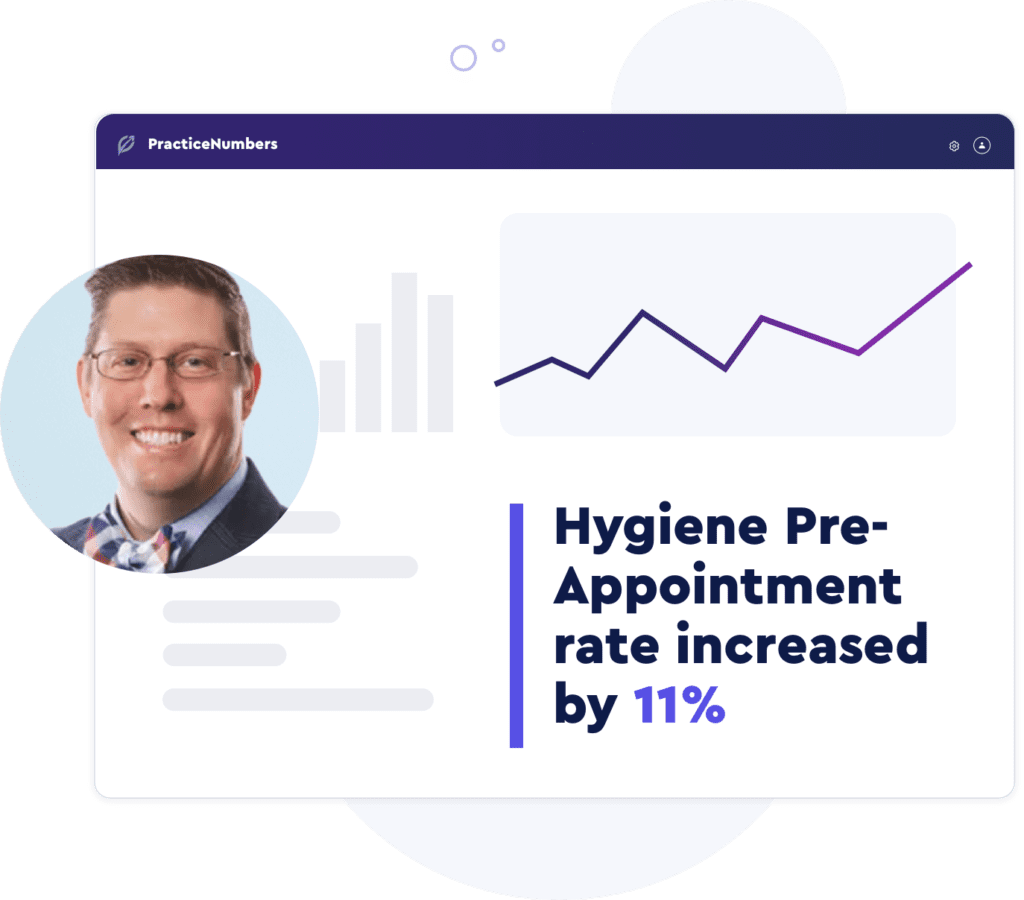
StoneRidge Dental, a General & Cosmetic Dentistry practice in Gilbert, AZ, faced challenges with multiple software systems that did not integrate well with their practice management needs. Dr. Nathan Saydyk, the practice owner, sought a comprehensive solution to streamline operations and improve patient care experiences. Upon implementing Practice by Numbers (PbN) in February 2022, StoneRidge Dental consolidated multiple services including analytics, patient communication, online scheduling, payments, patient forms, and reviews into a single platform. This integration not only simplified their workflow but also increased efficiency and patient satisfaction.
Key outcomes since adopting PbN include a significant increase in hygiene and new patient pre-appointment rates, demonstrating improved patient engagement and retention. The practice also benefited from customizable performance dashboards through Practice IQ, providing Dr. Saydyk with actionable insights to enhance operational performance across all aspects of the practice. Features like online scheduling and payments further streamlined administrative tasks, saving time and improving overall office efficiency.
Key outcomes since adopting PbN include a significant increase in hygiene and new patient pre-appointment rates, demonstrating improved patient engagement and retention.
Future Trends in Patient Relationship Management (PRM)
Patient Relationship Management (PRM) continues to evolve with advancements in technology and shifts in healthcare delivery models. This section explores emerging trends and predictions shaping the future of PRM.
Emerging Technologies and Innovations in PRM
The future of PRM is increasingly influenced by technological advancements that enhance patient engagement, streamline healthcare operations, and improve overall care delivery. Key technologies driving innovation in PRM include:
- Artificial Intelligence (AI) and Machine Learning: AI-powered tools analyze patient data to personalize treatment plans, predict patient outcomes, and automate administrative tasks, thereby improving efficiency and accuracy in healthcare delivery.
- Telehealth and Remote Monitoring: The widespread adoption of telehealth platforms allows healthcare providers to engage with patients remotely, offering convenient access to care and real-time monitoring of health metrics, which enhances patient-provider communication and care coordination.
- IoT (Internet of Things) Devices: Connected devices such as wearables and home monitoring tools enable continuous health monitoring and data collection, providing clinicians with valuable insights into patient health behaviors and trends.
- Blockchain Technology: Blockchain ensures secure and transparent sharing of patient data across healthcare networks, enhancing data integrity, interoperability, and patient privacy in PRM systems.
- Virtual Reality (VR) and Augmented Reality (AR): VR and AR applications are transforming patient education and therapy by offering immersive experiences that improve patient understanding of medical procedures and enhance rehabilitation outcomes.
Predictions for the Future of Patient Relationship Management
Looking ahead, PRM is poised to undergo significant transformations that will reshape patient care and healthcare management practices:
- Personalized Patient Experiences: PRM systems will increasingly focus on delivering personalized care experiences tailored to individual patient needs and preferences, fostering stronger patient-provider relationships and improving patient satisfaction.
- Integration of Social Determinants of Health (SDOH): PRM platforms will incorporate SDOH data to better understand and address the social, economic, and environmental factors impacting patient health outcomes, enabling more holistic care delivery.
- Data Interoperability and Interconnectivity: Enhanced interoperability between PRM systems and EHRs will facilitate seamless data exchange and integration across healthcare settings, improving care coordination and reducing administrative burden.
- Predictive Analytics and Population Health Management: Advanced analytics capabilities will enable healthcare providers to predict health trends, identify at-risk patient populations, and implement proactive interventions to improve population health outcomes.
- Expansion of Patient Engagement Tools: PRM systems will continue to expand patient engagement tools, such as mobile apps and patient portals, offering patients greater control over their health information, appointment scheduling, and communication with healthcare providers.
- Emphasis on Value-Based Care Models: PRM will support healthcare organizations in transitioning to value-based care models by optimizing resource utilization, improving patient outcomes, and reducing healthcare costs through proactive patient management and preventive care strategies.
Conclusion
Patient Relationship Management (PRM) stands at the forefront of transforming healthcare delivery by enhancing patient engagement, improving care coordination, and optimizing clinical outcomes. This section provides a summary of the benefits and importance of PRM, along with final thoughts on its adoption for improved healthcare delivery.
Summary of PRM Benefits and Importance
PRM systems play a crucial role in modern healthcare settings by:
- Enhancing Patient Experience: PRM improves patient satisfaction by personalizing care, enhancing communication, and addressing patient needs effectively.
- Improving Patient Outcomes: Through better care coordination and proactive patient management, PRM contributes to improved health outcomes and patient adherence to treatment plans.
- Increasing Operational Efficiency: PRM streamlines workflows, reduces administrative burdens, and enhances resource allocation, thereby improving overall healthcare efficiency.
- Boosting Financial Performance: By reducing costs associated with inefficiencies and improving patient retention and referrals, PRM systems contribute to enhanced financial performance for healthcare organizations.
- Ensuring Competitive Advantage: Healthcare providers leveraging PRM gain a competitive edge by delivering superior patient care experiences and meeting evolving patient expectations.
- Fostering Patient Loyalty and Referrals: Strong patient-provider relationships cultivated through PRM systems lead to increased patient loyalty and positive word-of-mouth referrals, driving practice growth.
Final Thoughts on Adopting PRM for Improved Healthcare Delivery
As healthcare continues to evolve, the adoption of PRM is essential for healthcare organizations striving to deliver patient-centered care, achieve operational excellence, and succeed in value-based care models. Embracing PRM enables healthcare providers to:
- Embrace Innovation: Leverage technological advancements to personalize patient care, improve clinical outcomes, and adapt to changing healthcare landscapes.
- Enhance Collaboration: Foster collaboration among healthcare teams, enhance communication with patients, and streamline care delivery processes through integrated PRM systems.
- Drive Sustainable Growth: By prioritizing patient engagement, operational efficiency, and clinical effectiveness, healthcare organizations can achieve sustainable growth and long-term success.
In conclusion, the implementation of robust PRM systems empowers healthcare providers to meet the diverse needs of patients, enhance healthcare delivery outcomes, and navigate the complexities of modern healthcare environments effectively. Innovative solutions like Practice by Numbers (PbN) exemplify the transformative power of Patient Relationship Management (PRM) in modernizing healthcare delivery. By integrating comprehensive tools for patient engagement, streamlined workflows, and actionable analytics, PbN empowers healthcare providers to elevate patient care experiences and operational efficiencies alike. Whether you’re looking to enhance patient satisfaction, optimize practice management, or navigate the complexities of value-based care, PbN offers tailored solutions to meet your needs. Take the next step towards unlocking the potential of PRM in your practice—visit our website or sign up for a demo today to discover how PbN can revolutionize your healthcare operations.
Frequently Asked Questions (FAQs) about Patient Relationship Management (PRM)
What is Patient Relationship Management (PRM)?
Patient Relationship Management (PRM) is a healthcare strategy and technology platform that focuses on improving patient engagement, satisfaction, and outcomes. PRM systems facilitate personalized communication, streamline administrative processes, and provide data-driven insights to enhance the patient experience and optimize healthcare delivery.
What are the key benefits of implementing a PRM system?
- Implementing a PRM system offers several benefits, including:
- Enhanced patient satisfaction and retention through personalized care.
- Improved health outcomes via proactive patient engagement and education.
- Increased operational efficiency by automating administrative tasks.
- Cost savings through better resource utilization and reduced patient turnover.
- Higher revenue growth from increased patient referrals and improved billing practices.
What challenges might healthcare practices face when adopting PRM systems?
- Common challenges in adopting PRM systems include:
- Resistance to change from staff and patients.
- Interoperability issues with existing IT infrastructure.
- Concerns about data privacy and security.
- Cultural and organizational shifts required for successful implementation.
- Ensuring adequate training and support for staff to use the system effectively.
What should healthcare practices consider when selecting a PRM system?
- When selecting a PRM system, healthcare practices should consider:
- The system’s compatibility with existing EHR and IT infrastructure.
- Customizability to meet specific workflow requirements.
- Data security and privacy features.
- User-friendliness and ease of integration.
- Vendor support and training resources.
- Cost and return on investment (ROI).
How does PRM support data-driven decision-making?
- PRM supports data-driven decision-making by:
- Providing real-time insights into patient preferences, behaviors, and health outcomes.
- Offering analytics and reporting tools to identify trends and inform targeted interventions.
- Enabling healthcare providers to monitor patient progress and adjust treatment plans based on data.
- Facilitating predictive modeling and population health management initiatives.
How does PRM differ from Electronic Health Records (EHR)?
While Electronic Health Records (EHR) systems primarily focus on storing and managing patient medical records, PRM systems are designed to enhance patient interactions and engagement. PRM systems offer tools for appointment scheduling, patient communication, feedback collection, and educational content delivery, complementing EHR functionalities by focusing on the overall patient experience and relationship management.
How can PRM systems improve patient engagement?
- PRM systems improve patient engagement by:
- Facilitating personalized communication through secure messaging, email, and SMS.
- Providing educational resources tailored to individual patient needs.
- Enabling patients to easily schedule appointments and access their medical information.
- Encouraging active participation in treatment plans through reminders and follow-up notifications.
How can healthcare practices overcome resistance to PRM adoption?
- To overcome resistance to PRM adoption, healthcare practices can:
- Engage stakeholders early in the implementation process to gather input and build support.
- Provide comprehensive training and continuous support to staff.
- Clearly communicate the benefits of PRM to all users.
- Implement phased rollouts to gradually integrate PRM functionalities.
- Foster a culture of innovation and collaboration within the organization.
Can PRM systems integrate with other healthcare IT systems?
Yes, PRM systems can integrate with other healthcare IT systems, such as EHRs, billing systems, and telehealth platforms. Effective integration ensures seamless data exchange, improves workflow efficiency, and enhances the overall patient care experience. Interoperable interfaces and standardized data formats are crucial for successful integration.
What role does PRM play in enhancing patient loyalty?
- PRM enhances patient loyalty by:
- Building strong, trusting relationships through personalized communication and care.
- Ensuring continuous engagement throughout the patient journey.
- Addressing patient concerns promptly and effectively.
- Encouraging patient involvement in decision-making and treatment adherence.
- Creating positive patient experiences that lead to higher satisfaction and referrals.
Are you ready to revolutionize your practice? Schedule a demo today!
Together, we can elevate the patient experience and redefine the standard of excellence in dental practices nationwide.

